Jewels from the 18th Century return to fashion with Star Power
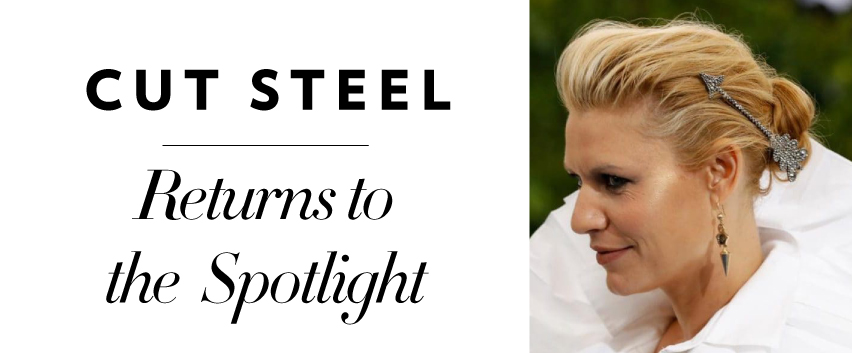
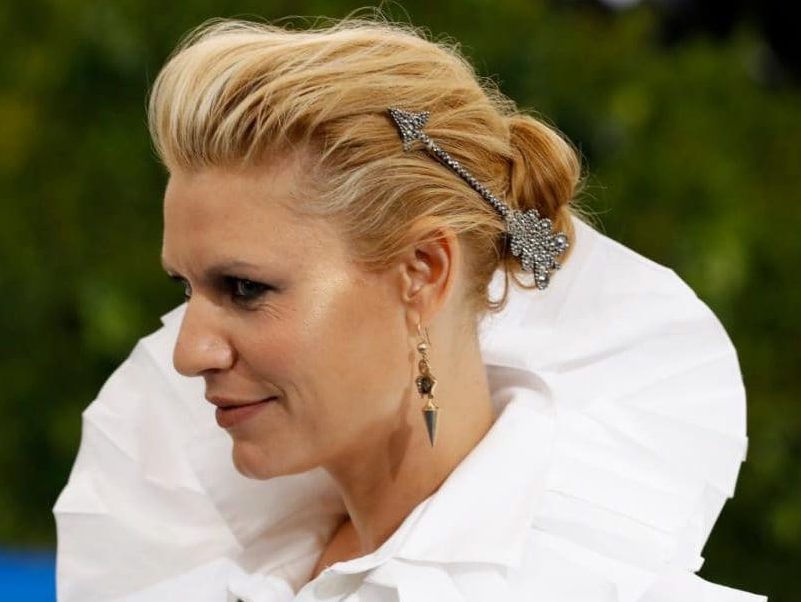
Claire Danes with a cut steel arrow brooch from Fred Leighton in her hair at the Met Gala 2017. Photo courtesy of Rex/Shutterstock
Show stopping jewels shone brightly at The Metropolitan Museum of Art’s Costume Institute benefit gala celebrating the opening of the Rei Kawakubo/Comme des Garçons: Art of the In-Between exhibition on Monday, May 1, 2017.
Pieces worn by celebrities attending ranged from mega-watt Harry Winston diamonds to various pieces by Chopard as well as vintage and new pieces by Cartier and Tiffany & Co.
But in an homage to the avant-garde designer, seeing pieces that date back for centuries such as large cut steel brooches and tiaras provided by Fred Leighton and worn by actresses Claire Danes and Sofia Boutella was a welcome juxtaposition. In fact these bold hair ornaments almost complemented the mood of the celebration.
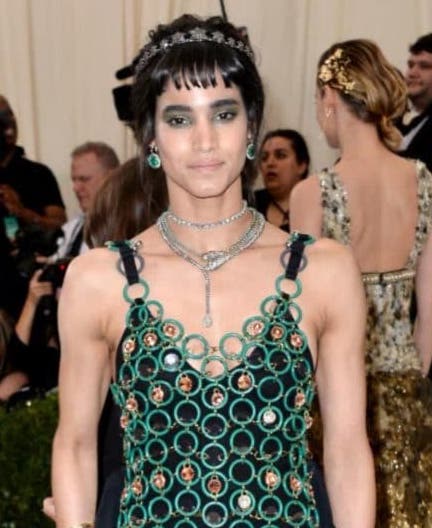
Sofia Boutella at the Met Galla 2017 wearing all Fred Leighton antique jewelry with cut steel tiara
On the antique circuit, cut steel has regained it’s popularity due to it’s soft shimmer and sparkle and gunmetal grey color rendering it a relevant choice to accessorize and/or contrast against modern ready-to-wear, vintage fashion and period inspired looks re-worked with an edgy futuristic feeling. Throughout the story are a few examples of cut steel that you can definitely wear today and, some you can even wear a la Claire Danes.
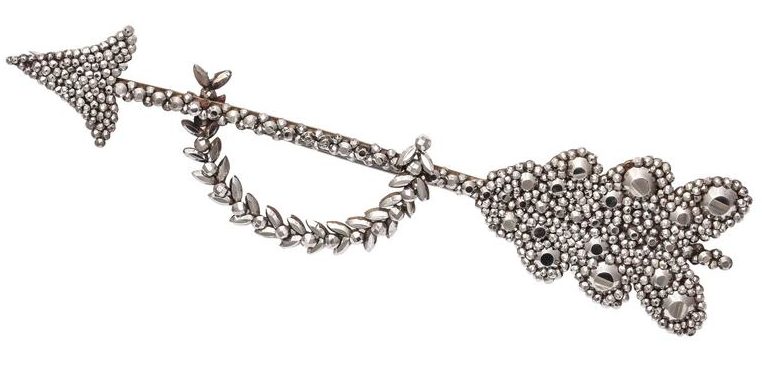
Glorious Antique Jewelry Antique cut steel arrow brooch
Cut-steel has an interesting history– it rose to the height of fashion when King Louis XV requested that France’s wealthy society donate their precious gems and jewelry to help fund his military campaigns during the Seven Years War.
Created from what was originally used for horseshoe nails, yes horseshoe nails in the 18th century, it was set with small, individually faceted and polished steel studs, fashioned to catch the light and sparkle like the diamond cuts of that period. It was designed as full parures as well as separate necklaces, brooches, earrings and bracelets.
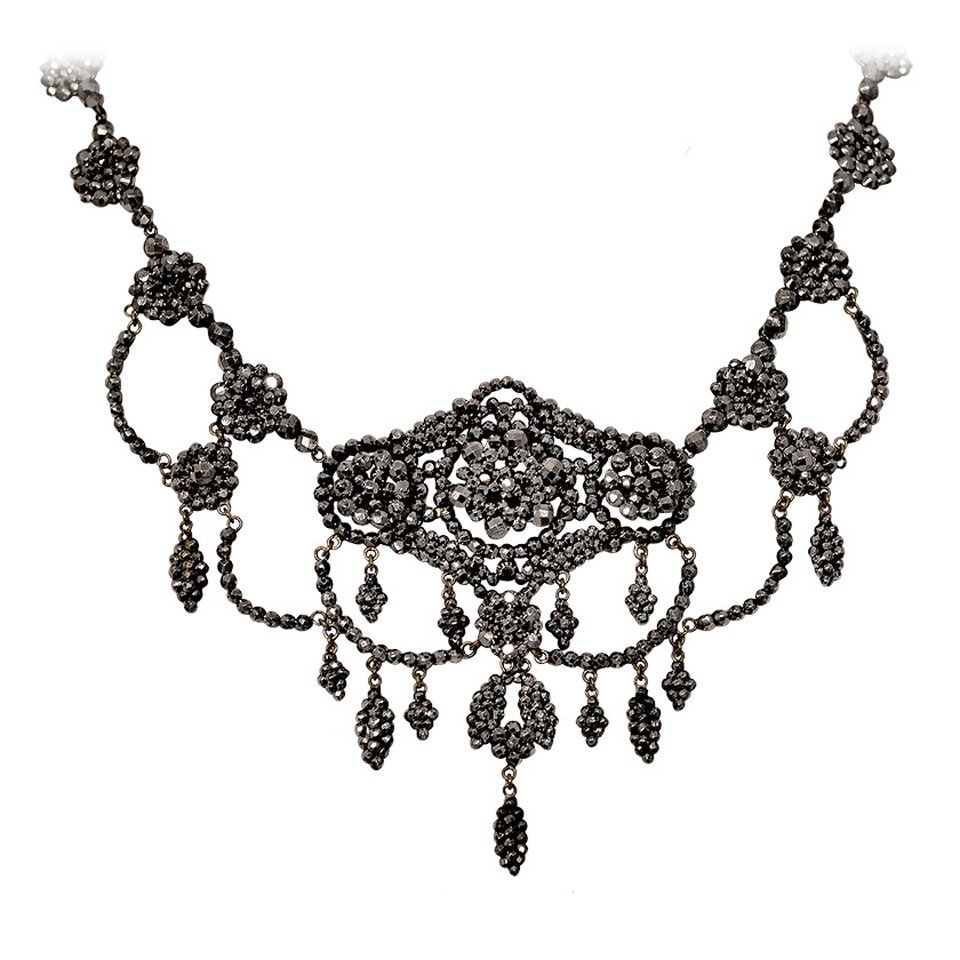
Glorious Antique Jewelry antique cut steel necklace
Shoe buckles and buttons were also quite a fashion statement of the time, but lost their wearability along the way. Savvy designers who mix antique and contemporary pieces, and who scour flea markets for cool bits and bobs have bought these lost treasures back—which might have stayed in an ‘auntie’s’ attic. These designers have re-imagined the cut steel into pieces that are significant into today’s jewelry market.
But back to the history: each of the earlier tiny studs of cut steel had 15 facets and were riveted into a base plate of brass or low-grade silver. Very ornate examples had more than one base plate to give the piece dimension.
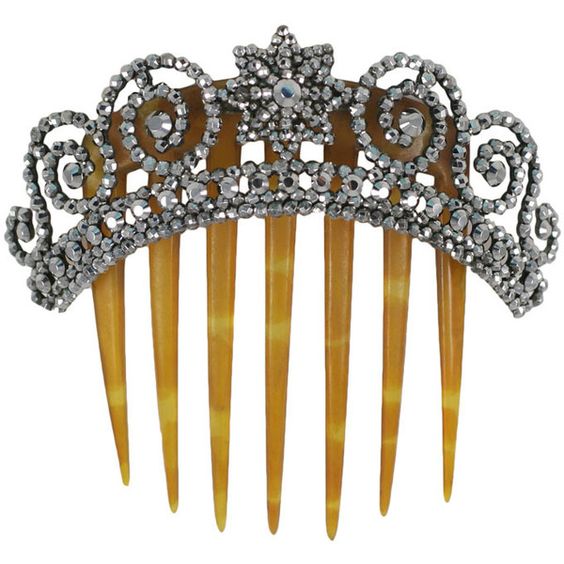
Glorious Antique Jewelry Cut Steel Hair Comb
Although steel work reportedly dates back to the Elizabethan era, the mid-18th century saw the rise of this type of jewelry. The demand continued to grow in England and France for both jewelry and other wearable items. One of the first factories to manufacture cut steel jewelry in quantity was launched by the industrialist Matthew Boulton in Birmingham in the late 1700s. Much of what Birmingham created in the mid-1700s was exported to France, until a British entrepreneur named Sykes moved to Paris in 1780 and began a cut-steel industry there. Cut steel was created with a more brilliant effect with a variety of different size studs and drops. The pieces were in such demand that they went for higher prices than that of gold jewelry. Napoleon bought Empress Marie Louise a parure of cut-steel, and Catherine the Great was painted in the late 1700s wearing a huge parure of cut-steel with a tiara, stomacher and massive necklace.
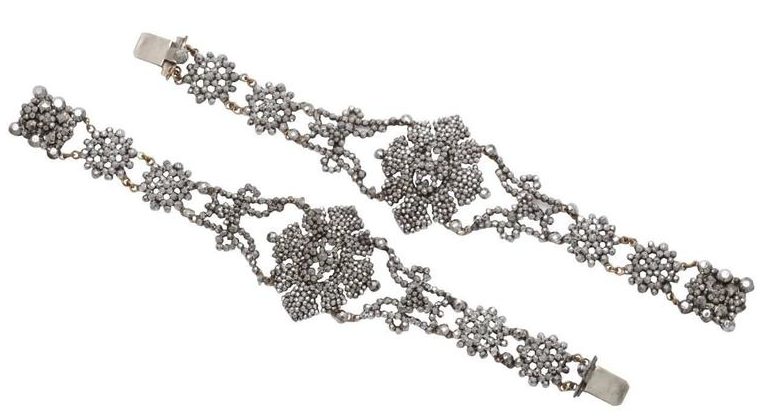
Glorious Antique Jewelry Georgian Cut Steel Bracelets
Like the diverse ways in which organic and polished rough cut stones and other materials that were once not considered precious are flourishing among designers today, cut steel’s craft outweighed its preciousness, increasing popularity and desirability.
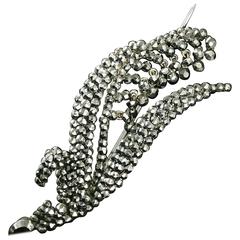
Laelius antique lily of the valley brooch




